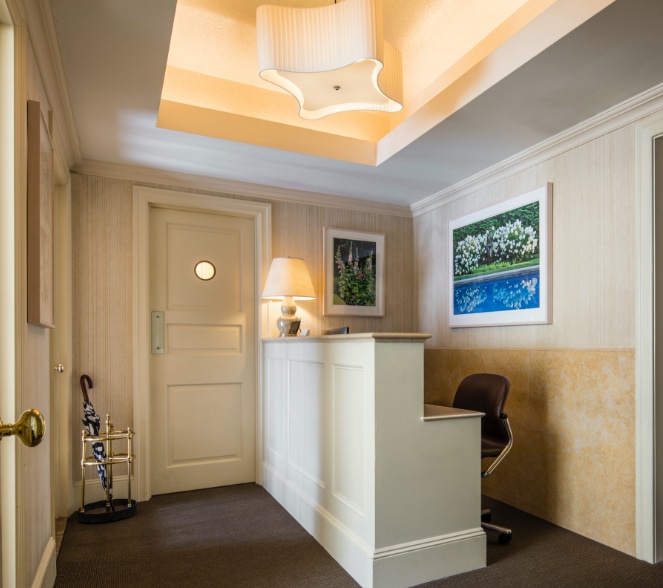Injectables are becoming more and more popular for facial rejuvenation, but there is a limit to what these agents can accomplish. Depending on the patient’s age and the type and severity of their wrinkles and folds, a facelift may be a better alternative.

before (left) and after facelift (right).
What types of injectables are used for facial rejuvenation?
There are two categories of injectables. Botox and Dysport, for example, are neurotoxins that relax overactive facial muscles that produce crow’s feet and brow furrows. Meanwhile, fillers such as Restylane, Juvederm and Perlane address surface depressions. These include laugh lines, also known as nasolabial folds, and marionette lines, which are the folds that deepen between the corners of the mouth down to the jaw line.
Fillers are also used to fill in hollow temples and to augment thin cheeks. However, fillers are not very effective for finely etched-in lines, such as those commonly seen above the upper lip in older women. When used appropriately, both types of injectables can help stave off the need for facial surgery or enhance the results of surgery. Fillers are most effective in individuals who are younger than fifty and who do not have sufficient looseness of the cheeks and neck to warrant a facelift. However, in older patients with significant jowl formation and loose neck skin with vertical bands, surgery such as a facelift is a more effective and long-lasting treatment (Figure 1).
What are the limitations of injectables?
Misguided efforts to avoid surgery by overusing fillers can result in an unnatural appearance. The concept of adding enough volume to take up loose skin, instead of surgically tightening it, is popular today among non-surgeons. Unfortunately, it is a mistaken notion that fillers can effectively address tissue laxity and produce a result similar to surgery. Patients compound this problem out of a natural instinct to avoid surgery if at all possible. Misuse of fillers can result in bloated cheeks that lack normal definition, impaired facial expression due to tissue stiffness, and unaesthetic, distorted facial proportions.
For those who believe that injectables are a cheaper alternative to a facelift, fillers can actually become a cumulatively more expensive option than surgery. Fillers require ongoing maintenance with risks of bruising and infection each time. Permanent fillers can avoid some of this disadvantage, but permanent fillers that are not perfectly placed can result in permanent aesthetic problems too.

loose cheeks (center), and after fillers to restore cheek volume
(right).
What is the role of surgery in facial rejuvenation?
The role of surgery is to restore sagging tissue to a more youthful position. Facelifts tighten lower cheeks and remove jowls. The elevated tissues also fill in cheek hollows to some degree. Facelifts can also tighten loose neck skin and eliminate vertical bands, something that no filler or Botox injection can accomplish. Older individuals who have lost facial fat volume with aging can have volume restored with surgery using fat grafts taken from another part of the body.
Like fillers, surgery also has boundaries. Over-tightening is not the solution for lost tissue volume. Instead, fillers and fat grafts are required to restore a youthful fullness and smooth contours. The best advice is to have both a dermatologist and plastic surgeon involved in the long term management of facial aging (Figure 2). Each operates within the boundaries that their tools allow and have a different perspective, and the best results are achieved when there is thoughtful, close collaboration between the two.




